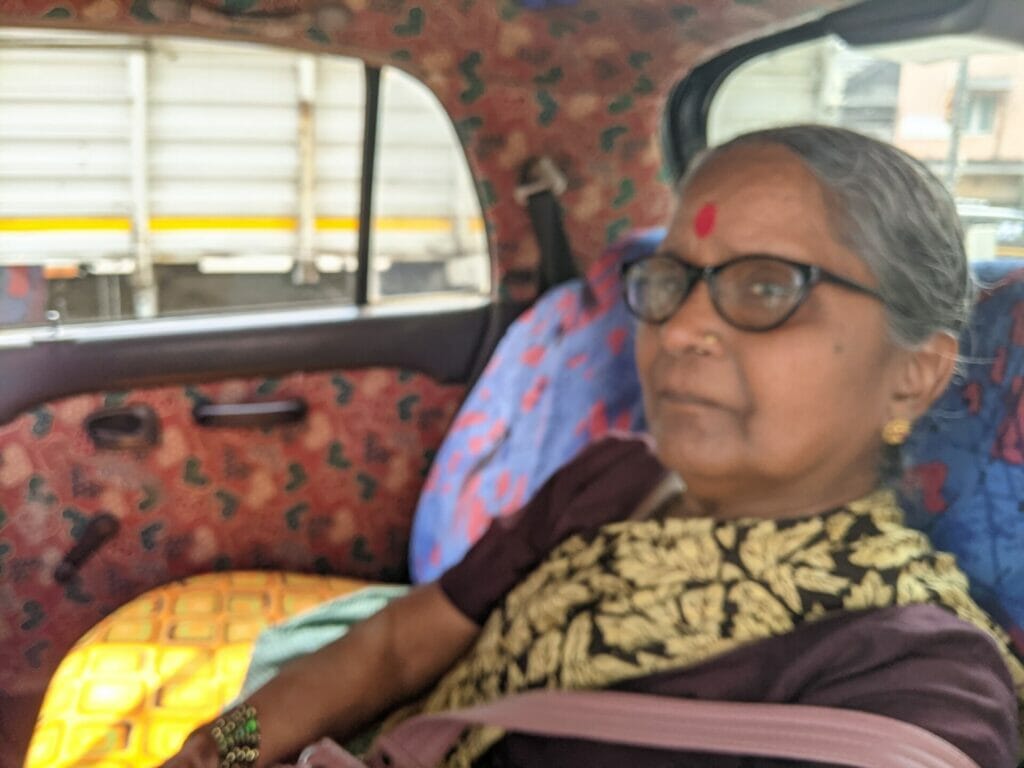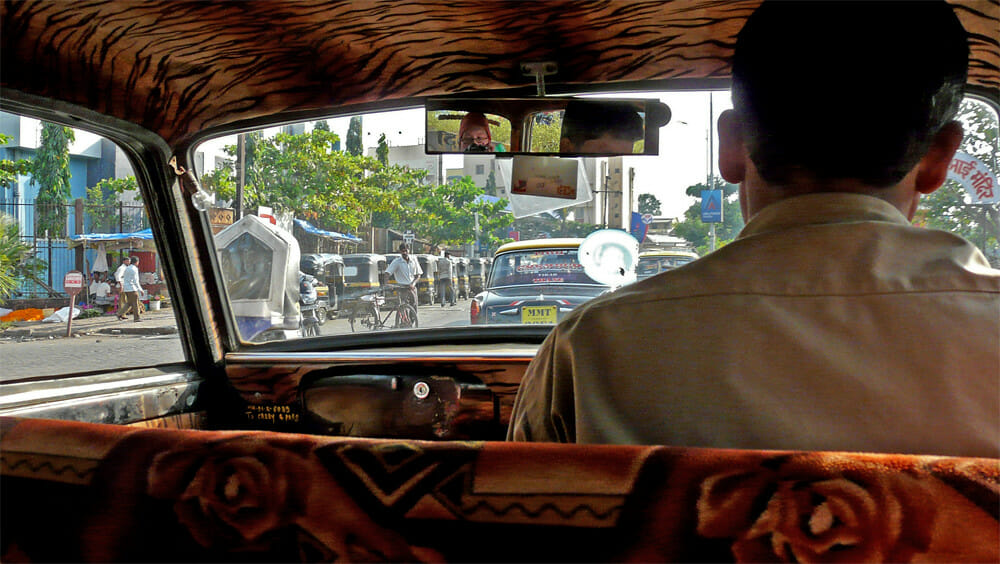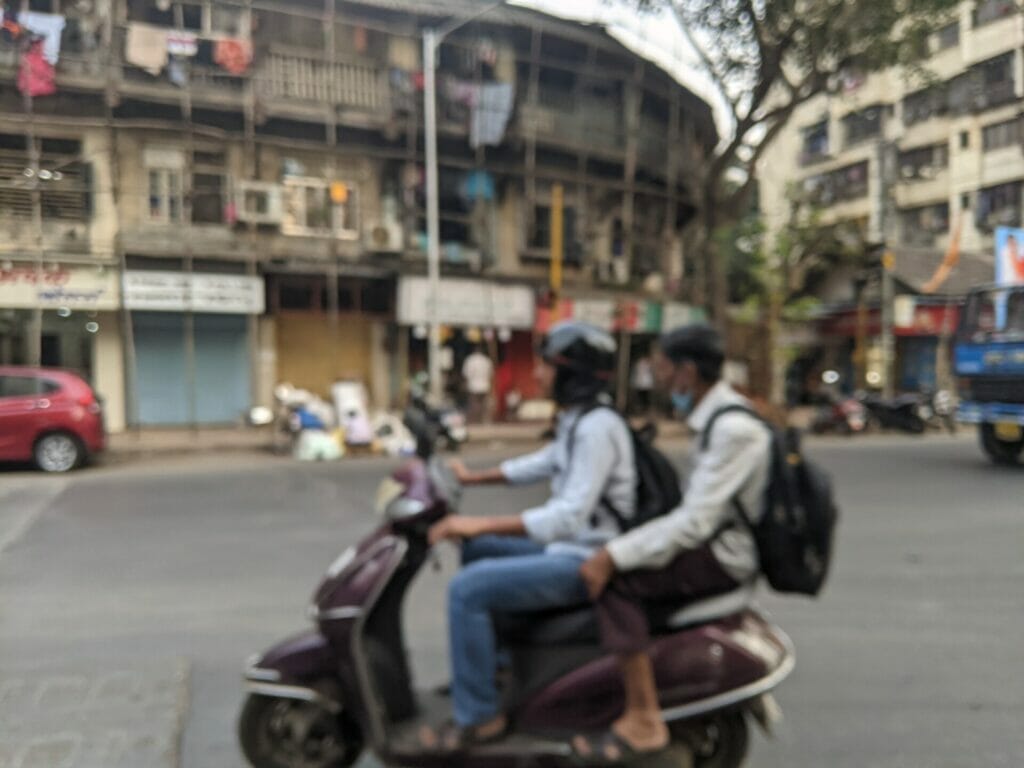Shakuntala (61) is a domestic worker in Mumbai’s Lower Parel where she takes up jobs in and around the area and travels in BEST buses. On the rare days when she cannot afford the tedious task of waiting at a bus stop, she chooses the luxury of a kaali peeli taxi. Shakuntala was surprised to find out that the city’s traffic police are now imposing fines of Rs 200 if all the passengers in a car fail to wear a seatbelt. “I travel short distances, my commute is limited from home to work and back I don’t know about all of this,” she says.
While the passenger seatbelt rule has been around for the past few years, under the Motor Vehicles (Amended) Act 2019, it was only this November that Mumbai’s traffic police declared stringent implementation of the law, in the aftermath of high profile businessman Cyrus Mistry’s death. However, it is not just Shakuntala who is unaware about it. There is confusion amongst the taxi drivers as well.

Read more: The causes and fixes to traffic in Mumbai: A discussion
Traffic police should clear up confusion, say taximen
Harilaal Chaurasia has been driving a kaali peeli taxi in Mumbai for the last 15 years, but his passengers have never been keen on wearing seatbelts as they have to travel short distances. “I make it a point to tell the front-seat passenger to wear a seatbelt but I am not so pushy towards the ones who take the backseat,” he says.
Older taxis that do not have a seatbelt provision on the rear seats have been exempted from the rule for the time being. General Secretary of Mumbai Taximen Union AL Quadros says, “Now taximen with old cars will have to spend on rear seatbelts. They are not available in the market as of now, so we had asked for an exemption till the year end.”
Read more: High CNG prices: Mumbai taxi drivers, auto drivers demand fare hike to survive
However, Harilaal’s taxi is well-equipped with passenger seatbelts. “I have not been fined yet. I am not sure if the rule exists anymore. I have also not seen traffic police impose a fine on anyone else,” he says. Apart from that, he is also confused if the fine is to be paid by the taxi driver or the passenger.

Quadros says the union was assured by the traffic police that if a taxi passenger flouts the rule it is them who will have to pay the fine and not the driver. On the contrary, traffic police constables says whether or not it is taxi or a regular car, the person who owns the car will have to pay as the challan is issued against their vehicle.
Need for seatbelts
From 1st of November to the 26th of the month, Mumbai’s traffic police have fined a total of 28,055 passengers for not wearing a seatbelt. AV Shenoy, a well-known transport expert, believes the passenger seatbelt rule should be enforced only on highways and not on usual city roads. “The rule is impractical for city roads as vehicles don’t usually go that fast due to traffic congestion. It should be left to the wisdom of the passengers,” he says.
He also points out that only a small number of Mumbai’s population travels by private cars and that the majority uses buses as a primary mode of road transport. “What about auto-rickshaws and BEST buses? There the passenger seatbelts have not been made compulsory but it is being enforced on cars just to show that something is being done in the aftermath of Cyrus Mistry’s death. That is not the solution.”
He adds there are many aspects to road safety like road engineering which are left unaddressed. Notably, a recent report by World Health Organization (WHO) emphasized that wearing seatbelts in the rear seat can reduce the risk of being killed and injured by 25% and 75%, respectively.
A 2019 study on the use of rear seatbelts in India reveals that even though a large number of people are aware of the presence of rear seatbelts in their vehicles, only a portion of the population uses them. The study, which surveyed drivers from multiple cities including Mumbai, concluded that while there is a law mandating the use of rear seatbelts for all vehicles, awareness and enforcement around it is negligible.
‘Not always possible to follow such traffic rules’
Mumbai’s traffic police had already started imposing fines of Rs 500 on pillion riders for flouting the helmet rules a few months before they started keeping an eye on car passengers. The pillion rider helmet rule is also not new, it has been around since 1988 under the Motor Vehicles Act.
42-year-year old government employee, Bhimrao, who rides a motorcycle, says he had heard about the fines for flouting the “double helmet rule” a couple of months ago from his friends. “But someone told me recently that it isn’t compulsory for pillion riders to wear a helmet anymore,” he says.
While Bhimrao was misinformed, he was not the only one to believe the rule was scrapped.
A relatively younger 32-year-old Kaustubh was also convinced that the rule no longer exists. “A lot of people around me are saying that now, instead of pillion rider helmet rule, car passengers have been asked to use seatbelts,” he says. Meanwhile, both say there are logistical difficulties in following the rule for motorcycle riders.

“The rule is meant for our safety but it is not always possible to follow it as there is no place on a motorcycle to hang a helmet,” says Bhimrao. A month ago he had bought another helmet and had locked it on the rear end of his motorcycle but he says someone stole it. “Non-gear bikes have space to keep additional helmet inside but that’s not the case with motorcycles.”
Kaustubh on the other hand says he bought a spare helmet for pillion rider after the rule and fixed up additional locks near the handle. “But carrying that around is only possible for planned trips and not when someone suddenly needs a ride.”
From September 1st to November 26th, a total of 1.11 lakh pillion helmet challans were issued by the traffic police. However, this number is relatively low. In the first two months after the enforcement began in June, 1.44 pillion riders were fined for not wearing a helmet.
‘This traffic rule is difficult to implement’
A traffic constable stationed at the busy Hindmata signal in Dadar says such rules are tough to implement because of the heavy traffic around the area. “We can only impose fines on one person at a time and many get away,” he says.
“We also take into consideration their situations, for instance if it is a senior citizen we explain to them what the traffic rule is and let them go with a warning,” he adds. According to the official, there’s also not enough manpower to implement the passenger seatbelt-helmet rules effectively.
When asked if there was a need to generate more public awareness about the rule, DCP (Traffic) Raj Tilak Roushan says, “We are taking regular action against violators, that itself is one form of awareness.”
Mumbai’s traffic police ran social media awareness campaigns up until late October about the helmet rule and till early November about the passenger seatbelt rule. “It has been effective and overall people are inclined to follow the rule so sooner or later we’ll achieve a 100%,” says Roushan.
Police want to show that they are working by imposing fines .by cyrus mistry acciedent it is clear thatladies cant drive properly.in mumbai vechicle can’t speed up so no need of seat belt pl cancel the fine and let the rule be only on highways.